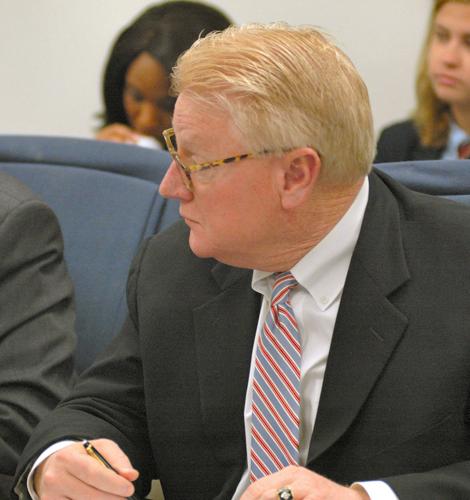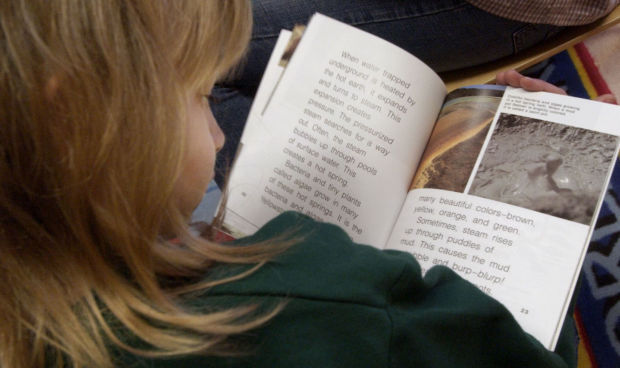PHOENIX — A key architect of the greatly expanded school-voucher plan approved Thursday is already looking to undermine the compromise provision that secured its passage.
In a message to financial supporters late Thursday, Darcy Olsen, chief executive officer of the Goldwater Institute, said Arizonans who want more state money given so parents can send their children to private and parochial schools should not be dismayed about the cap of about 30,000 vouchers in the final legislation.
“We will get it lifted,” Olsen said.
Olsen didn’t even wait until Gov. Doug Ducey penned his approval hours later to the delicately crafted deal, which makes all 1.1 million students in Arizona public schools eligible to get state money to attend private and parochial schools, but sets the 30,000-voucher cap.
The Goldwater Institute participated in that deal, which managed to get the bare minimum 31 votes in the House and 16 in the Senate to secure approval.
Olsen’s comments angered state Sen. Bob Worsley, a Mesa Republican who brought all the interests together and corralled the votes.
“I just think it’s deplorable that she would put that in print,” he said, especially since Olsen was involved in the talks.
“She was negotiating in bad faith with us if that was her intention,” Worsley said.
An aide said Olsen was not available to comment. In her place, Goldwater President Victor Riches said that her message, meant for long-time donors, should not be taken as a vow to start working to remove the cap — at least not yet.
“It was probably not very artfully worded, I would say,” Riches said.
But Riches, who acknowledged Goldwater’s role in the final deal, would not commit to waiting the full six years — that’s how long the deal limits voucher enrollment — before trying to get the cap removed.
“We’re not interested in making any changes right now,” he said. But Riches said he could foresee a scenario where waiting makes no sense.
“Let’s just say the present cap is hit and there are 20,000 people on the equivalent of a wait list,” he said. “Would we want to reevaluate that? Yes.”
Worsley said that is directly contrary to the purpose of the cap, which will be about 30,000 by the 2022-23 school year. He said the next six years are designed to be an experiment to see if it’s appropriate to keep the cap, increase it, or get rid of it entirely.
He said the six-year period gives the Goldwater Institute and other supporters of vouchers “plenty of freedom” to make the case for further expansion.
Worsley had a message for the institute and anyone else who intends to try to make changes before then: “That will not happen while I’m in the Legislature.”
However, with term limits, Worsley can serve in the Senate only through 2020.
Someone who could be in office longer is Ducey. If reelected next year, his term would run through 2022.
And the governor, a self-professed supporter of “school choice,” will not commit to keeping the voucher limits in place through the end of his time in office.
“We have to see how the program works,” his press aide Daniel Scarpinato said when asked if Ducey would veto any changes before then. Scarpinato said it’s premature to even be talking about changes as the law has not yet taken effect.
The ability of Olsen to pull apart the deal and scrap the cap could be dependent on whether the governor goes along.
The Goldwater Institute has links with the governor.
Riches was previously Ducey’s deputy chief of staff. Christina Corieri, Ducey’s education policy adviser came from the Goldwater Institute.
Ducey also tapped prior Clint Bolick, who was Goldwater’s vice president for litigation, as his first pick for the Arizona Supreme Court.
And that doesn’t count former Goldwater staffers elsewhere in the Republican power structure, including Michael Hunter as chief of staff to House Speaker J.D. Mesnard.
The cap Worsley wants protected is the centerpiece of the deal.
Arizona has had vouchers since 2011 when lawmakers agreed to give money to parents of students with special needs who say their youngsters cannot get their needs met in public schools. Since then there has been incremental expansion to cover children on Indian reservations, students in schools rated D and F, and foster care children.
All along, however, there have been caps, currently about 5,000 students a year, though only about 3,800 have enrolled. Those caps, however, had been set to end after 2019.
This year, Sen. Debbie Lesko, R-Peoria, sought to remove all those limits on who was eligible, entitling all 1.1 million students in Arizona schools to get a state-funded voucher, formally known as an “empowerment scholarship account,” to attend a private or parochial school.
That proved unpalatable to a majority of lawmakers.
The new law Worsley shepherded through the Legislature on Thursday phases out all of the restrictions between now and 2021 on who can seek a voucher.
On paper, that would make all public school students eligible for a voucher. But under the deal, a cap would remain, though it would increase slowly to about 30,000 by the 2022-2023 school year.
The cap swayed enough lawmakers to support expanded vouchers, but without a single vote to spare.
For example, Rep. Maria Syms, R-Paradise Valley, said she was convinced to go along because the bill “phases in expansion and puts a firm cap on the current program’s unlimited expansion.”
Another key change deals with the cost of the vouchers, which are debit cards given to parents of eligible children to spend on everything from tuition and fees at private schools to tutors and supplies for those who educate their children at home.
Under current law, a student without special needs coming from a public school would be eligible for a voucher of about $5,600 a year. That actually is more than the state now provides in aid to the district had the student remained in public school.
The final version of the bill decreases that basic voucher to $4,400.
Worsley said he tried to get a “means test” which would have narrowed the eligibility to the most needy but couldn’t win support for that. What he did secure is a provision that provides a 10 percent boost in the voucher for students coming from homes where family income is less than 250 percent of the federal poverty level, a figure that currently equals $60,750 for a family of four.
There also is, for the first time, some public accountability for whether the vouchers result in better educational outcomes.
Any student in grades 3 through 12 is required to annually take either a nationally recognized or state-approved assessment of reading and math.
While individual results are reported to the parents, any school that accepts at least 50 students who are using vouchers to pay for tuition must also post the aggregate test scores of all students, voucher or not, in each grade.





